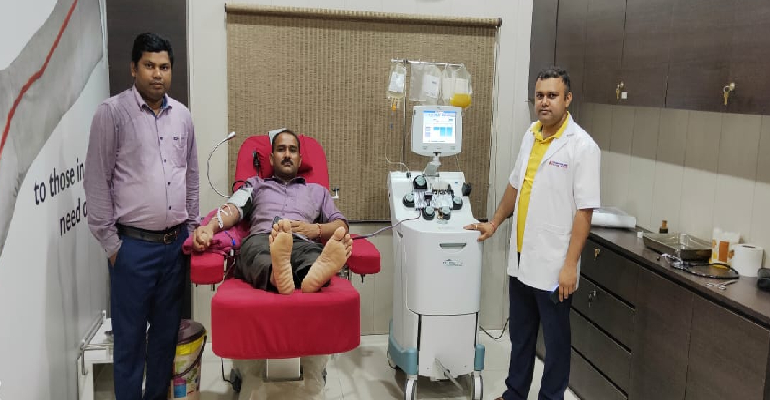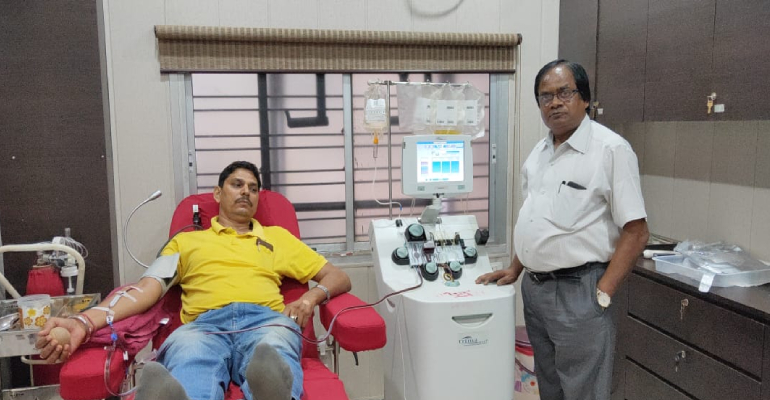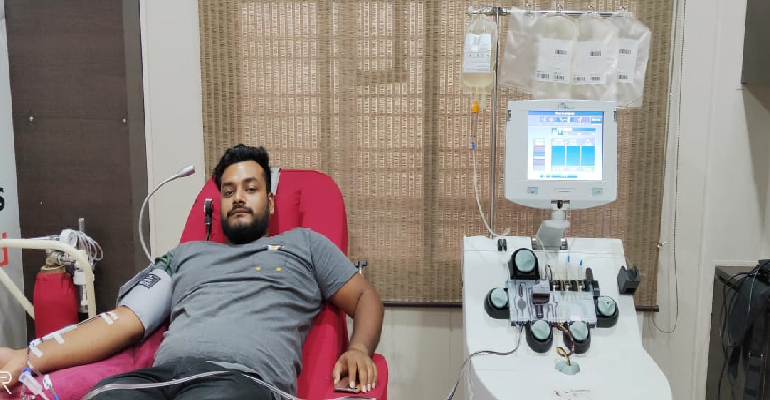Plasmapheris is a medical procedure that involves removing whole blood from a donor or patient and separating the blood into individual components so that one particular component can be removed. The remaining blood components then are re-introduced back into the bloodstream of the patient or donor. Plasmapheris is used for the collection of donor blood components (such a platelets or plasma) as well as for the treatment for certain medical conditions in which a part of the blood that contains disease-provoking elements is removed. Plasmapheris is also called pheresis or hemapheresis.The terminology used may also reflect the component of blood that is being removed, such as:
- Plasma (plasmapheresis)
- Platelets (plateletpheresis)
- Leukocytes (leukapheresis or leukopheresis)
- Lymphocytes (lymphopheresis or lymphapheresis)
- Red blood cells (erythropheresis)
Total plasma exchange (removal of plasma and replacement with fresh frozen plasma) can also be performed using the Plasmapheris procedure. It is also used for the collection of stem cells from the peripheral blood.
How is Plasmapheris performed?
All Plasmapheris procedures involve directing the blood in the patient/donor's veins through tubing to a machine that separates the blood components. The separation is done by either a centrifuge process or a filtration process on the blood in the machine. After the separation, the desired component of the blood is removed, while the remainder of the blood components are reinfused back into the patient. The entire procedure is painless and typically takes about two hours, or only slightly longer than a conventional blood donation.













